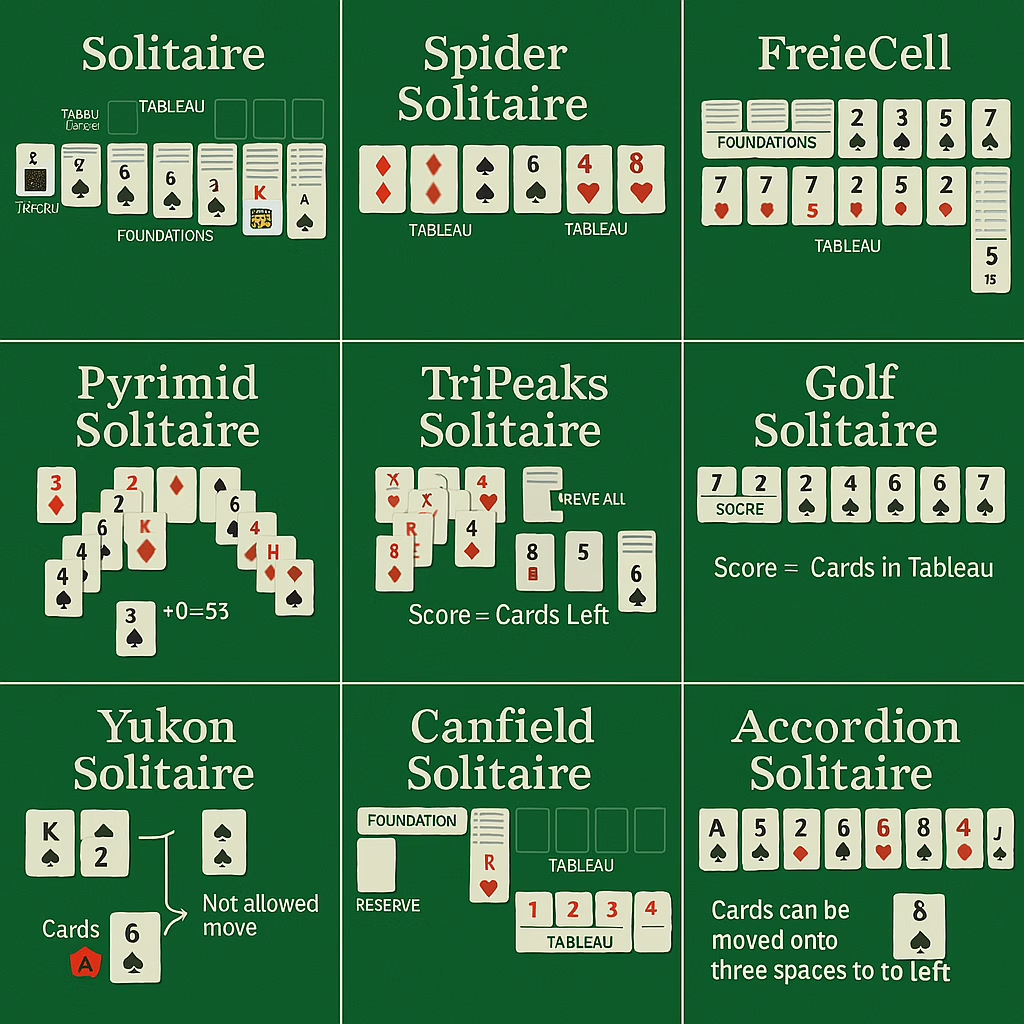Solitaire has long been a beloved pastime worldwide, offering countless variations that cater to different tastes and skill levels. Here, we’ll explore ten popular types of Solitaire, detailing their rules, gameplay, and distinguishing features.
1. Klondike Solitaire (Classic Solitaire) #
Klondike Solitaire is the most recognized form of Solitaire. The goal is to build four foundation piles from Ace to King.
Rules & Gameplay:
- Cards move between tableau piles in descending order, alternating colors.
- Foundations build upward by suit from Ace.
- The draw pile can reveal cards one by one or in threes.
Essential Difference:
- Traditional setup with seven tableau piles, distinct in alternating color requirements.
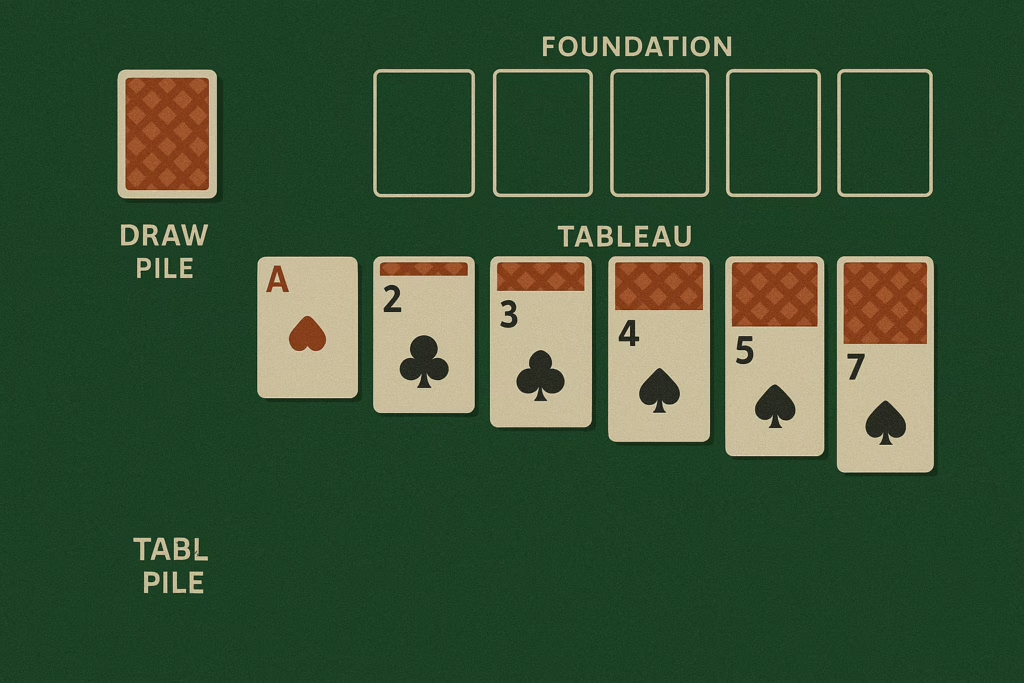
2. Spider Solitaire #
Spider Solitaire is challenging yet addictive, typically played with two decks.
Rules & Gameplay:
- The tableau consists of ten piles; sequences must be built in descending order.
- Complete sequences from King to Ace are removed from play.
- Cards can be moved regardless of suit, but completed sequences must match suits.
Essential Difference:
- Uses multiple decks, emphasizes suit-based sequences.
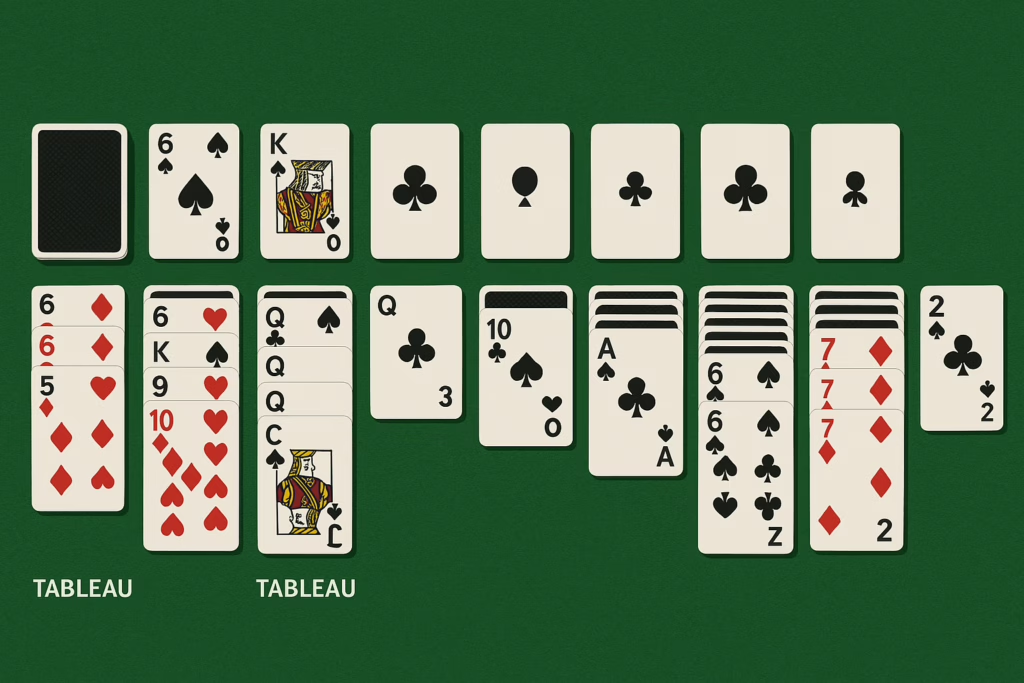
3. FreeCell Solitaire #
FreeCell is famous for its strategic depth and high solvability.
Rules & Gameplay:
- All cards are dealt face-up into eight tableau piles.
- Four free cells temporarily store cards to facilitate movement.
- Foundations build from Ace to King by suit.
Essential Difference:
- All cards are visible; introduces “free cells” for temporary storage.
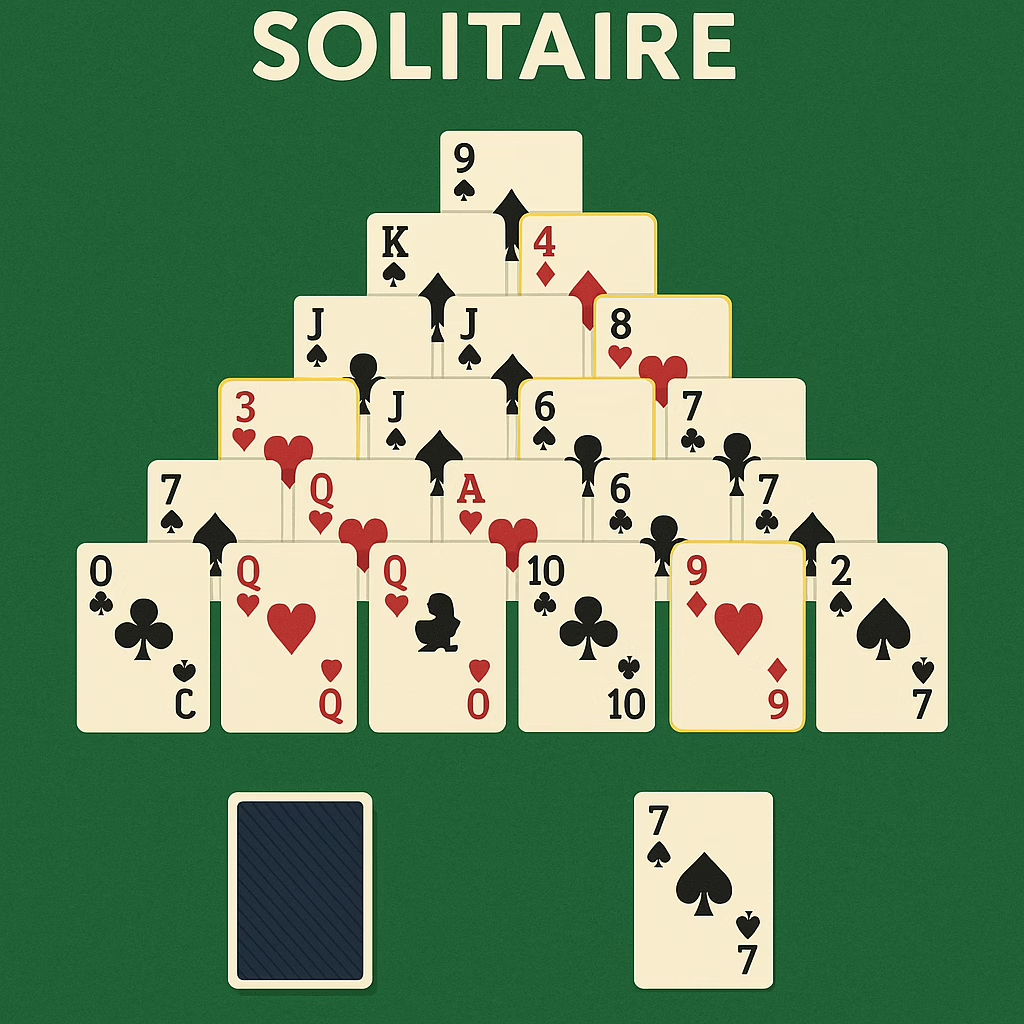
4. Pyramid Solitaire #
Pyramid Solitaire involves pairing cards to total 13, clearing the pyramid.
Rules & Gameplay:
- Cards arranged in a pyramid, some overlapping.
- Pair cards adding up to 13 to remove them from the pyramid.
- Kings are removed individually.
Essential Difference:
- Numeric pairing-based gameplay, pyramid structure.

5. TriPeaks Solitaire #
TriPeaks combines speed and strategy, featuring three pyramid peaks.
Rules & Gameplay:
- Clear cards by selecting ones either one higher or lower than the waste pile card.
- Clear all three peaks to win.
Essential Difference:
- Faster gameplay, three distinct peaks layout.
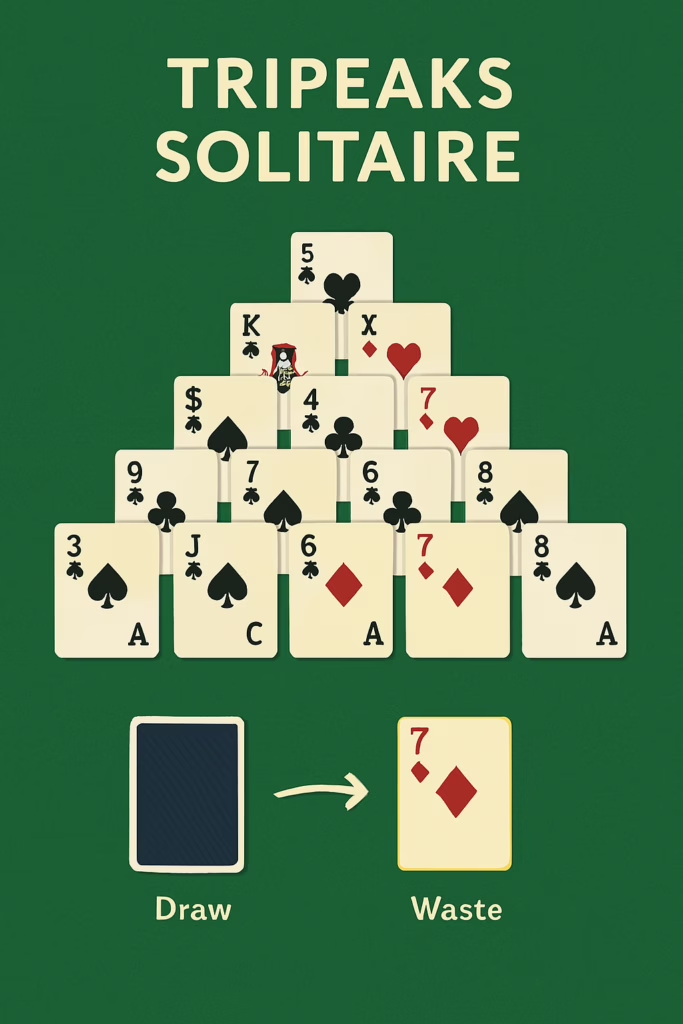
6. Golf Solitaire #
Golf Solitaire is named for its golf-like scoring system.
Rules & Gameplay:
- Aim to clear tableau by matching cards one rank higher or lower than the waste card.
- Fewest remaining cards score better.
Essential Difference:
- Scoring based on remaining tableau cards, simple but engaging gameplay.

7. Yukon Solitaire #
Yukon Solitaire resembles Klondike but allows more flexibility.
Rules & Gameplay:
- Cards in tableau can move regardless of sequence correctness.
- Foundations build upward by suit from Ace.
Essential Difference:
- Tableau mobility without strict sequence order.
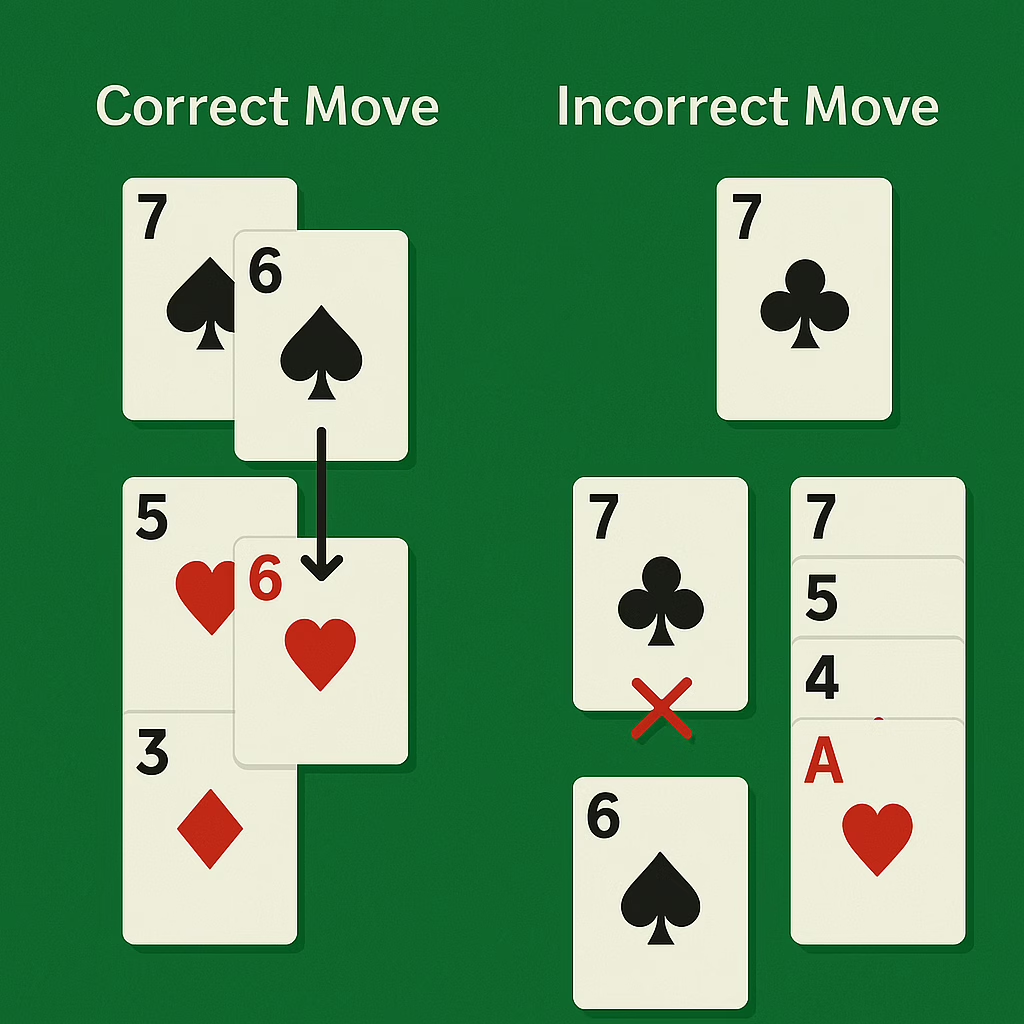
8. Canfield Solitaire #
Canfield Solitaire offers increased difficulty with fixed foundation cards.
Rules & Gameplay:
- Foundation cards start randomly and are built sequentially.
- Limited tableau piles and reserves increase challenge.
Essential Difference:
- Fixed foundations and limited tableau structure.
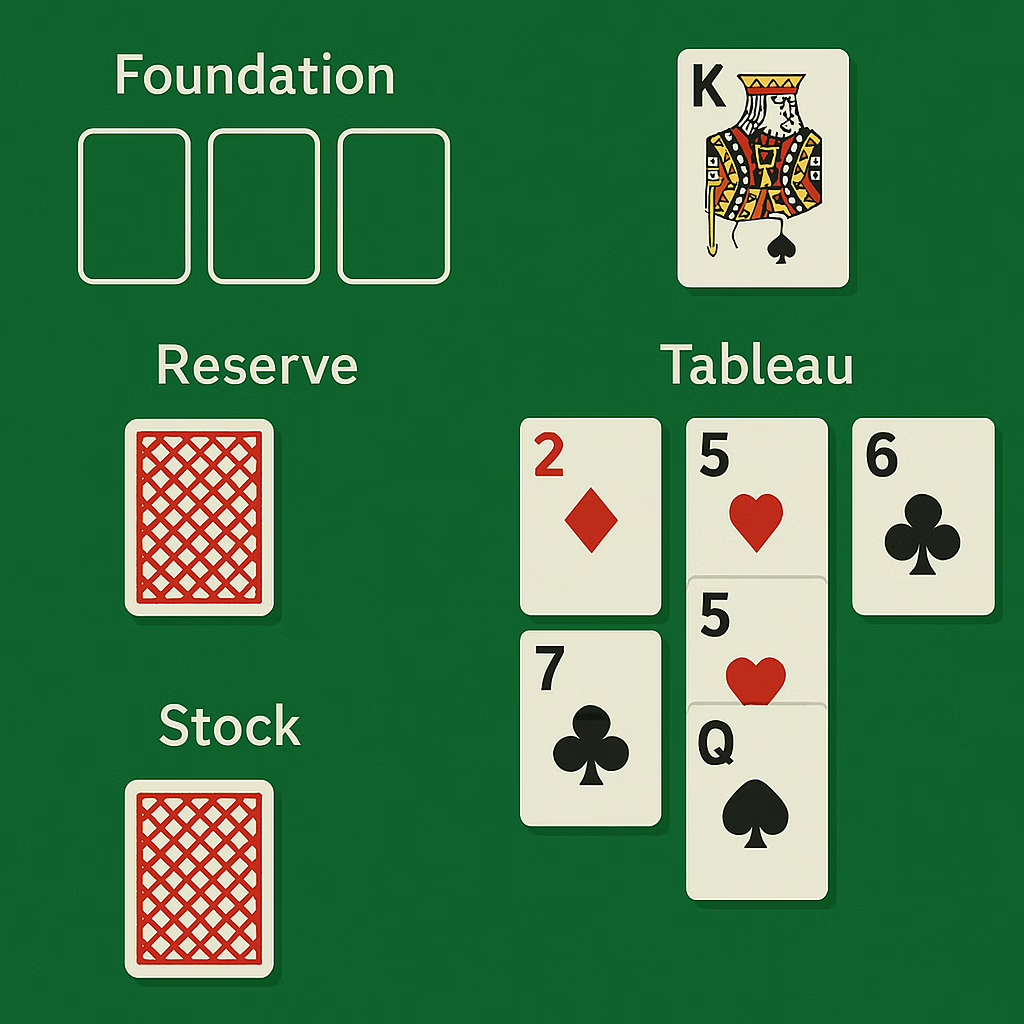
9. Scorpion Solitaire #
Scorpion Solitaire challenges players with a unique tableau layout.
Rules & Gameplay:
- Seven tableau piles with mixed face-up and face-down cards.
- Build sequences in descending order, suit doesn’t initially matter.
- Completed suits from King to Ace clear from the tableau.
Essential Difference:
- Complex tableau management, flexible initial sequencing.
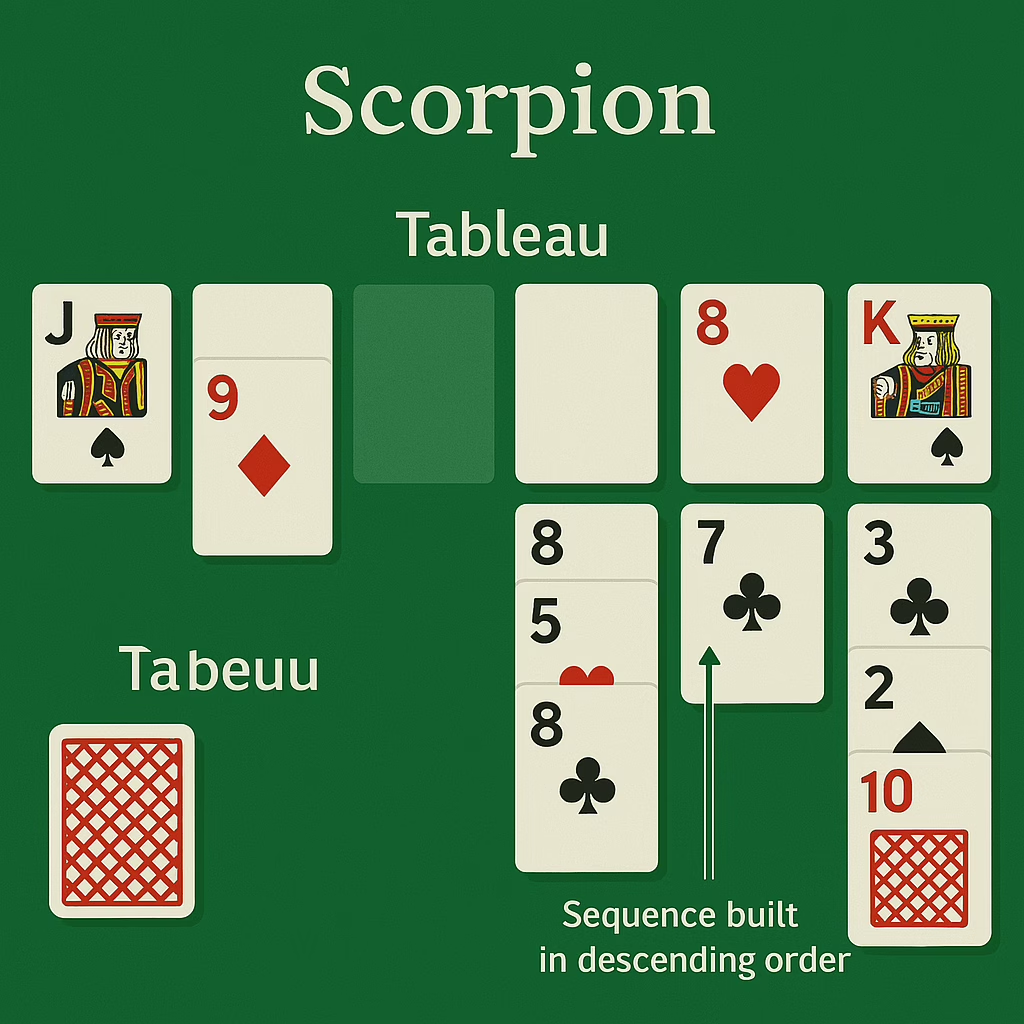
10. Accordion Solitaire #
Accordion Solitaire is known for its extreme difficulty.
Rules & Gameplay:
- Cards are dealt in a single long row.
- Compress the row by stacking matching suits or ranks.
- Goal is to reduce to a single pile.
Essential Difference:
- Highly challenging, minimalistic setup.
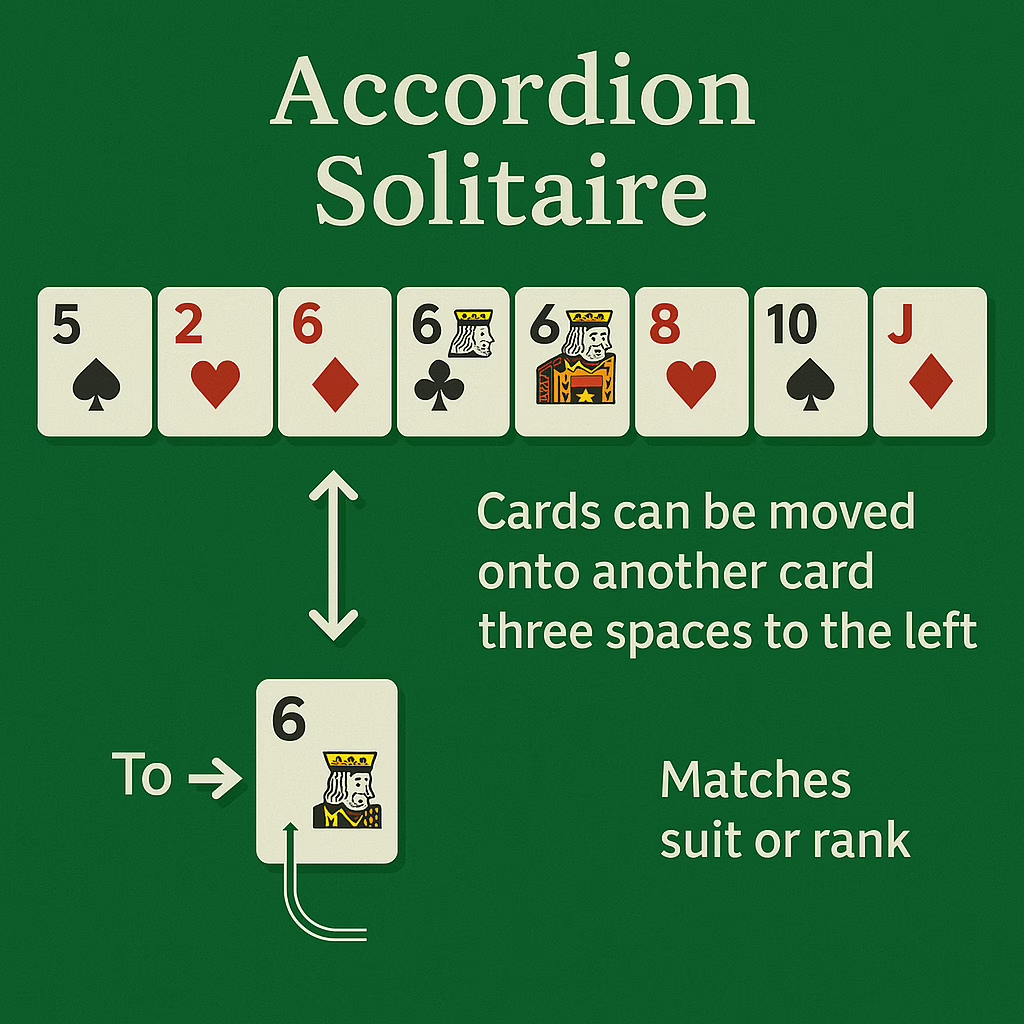
Conclusion #
Each type of Solitaire offers unique rules and challenges, ensuring endless entertainment. Whether you prefer the simplicity of Golf or the complexity of Scorpion, there’s a Solitaire variation perfect for every player. Explore, practice, and find your favorite type!
